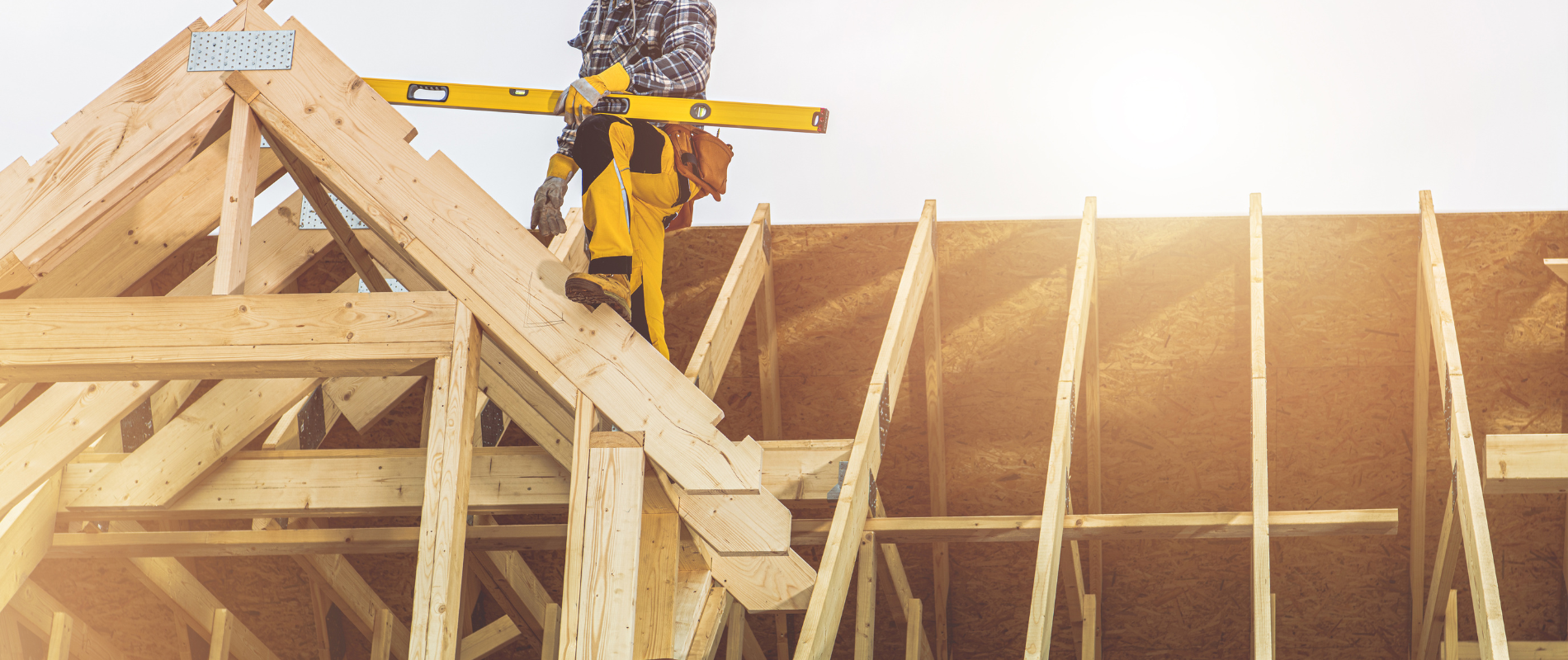
How to choose your roofing contractor: Missouri Edition Vol .2
Hello out there Missouri! My name is Thomas McCormack from M5 Contracting & Storm Restoration back with another edition of our roofing blog dedicated to helping Missouri homeowners better understand their roofing systems.
Today's blog is important so lets not waste any further time and take a deep dive into how you should go about choosing a roofing contractor you can trust in Missouri.
Local Expertise Matters:
Local expertise is a critical factor when choosing a roofing contractor in Missouri, primarily due to the state's diverse and sometimes challenging climate. The Show-Me State experiences a wide range of weather conditions, including heavy rains, hailstorms, and occasional tornadoes. Here's a deeper exploration of why local expertise matters when it comes to roofing in Missouri:
1. Understanding Missouri's Weather Challenges:
Missouri's climate can be unpredictable and varies across regions. From the humid subtropical climate in the southern part of the state to the more continental climate in the north, roofing contractors must be well-versed in the unique challenges each area presents. Heavy rains can lead to water damage, hailstorms can cause significant roof impact, and occasional tornadoes demand specific structural considerations. Local contractors, intimately familiar with these weather patterns, can tailor their services to address these specific challenges effectively.
2. Knowledge of Building Codes and Regulations:
Building codes and regulations can vary from state to state and even from one municipality to another. Local roofing contractors in Missouri are well-versed in the specific codes and regulations that govern construction and roofing in the state. This ensures that the roofing project not only meets aesthetic and functional expectations but also complies with all legal requirements. Hiring a contractor unfamiliar with Missouri's regulations could lead to costly mistakes and potential legal issues down the line.
3. Materials Suited to Missouri's Climate:
Local roofing contractors are knowledgeable about the best materials that can withstand Missouri's climate conditions. Whether it's choosing shingles with high wind resistance, impact-resistant materials to combat hail damage, or roofing materials designed to withstand prolonged exposure to humidity, a local contractor will be able to recommend and install materials that are specifically suited to the unique challenges posed by Missouri's weather.
4. Quick Response to Weather-Related Emergencies:
Missouri's weather can be severe at times, leading to sudden roofing emergencies such as leaks or structural damage. Local contractors, with their proximity, can provide quicker response times in the event of such emergencies. They understand the urgency of addressing weather-related issues promptly to prevent further damage to the home, showcasing the advantage of having a roofing professional who is familiar with the local climate and can respond swiftly to weather-induced problems.
5. Community Reputation and Trust:
A local roofing contractor is likely to have a well-established presence in the community. Their reputation is built on a history of successfully navigating and overcoming the challenges presented by Missouri's climate. Homeowners can rely on the testimonials and experiences of neighbors, friends, or other community members who have worked with the contractor in the past. This local reputation adds an extra layer of trust and confidence in the contractor's ability to handle Missouri-specific roofing issues.
In essence, when it comes to roofing in Missouri, local expertise goes beyond just technical know-how. It encompasses an understanding of the climate, adherence to regulations, knowledge of suitable materials, and a commitment to serving the community effectively. Choosing a roofing contractor with local expertise ensures not only a roof that looks good but one that stands resilient against the dynamic weather conditions of the state.

Check Credentials and Insurance
Checking a roofing contractor's credentials and insurance coverage is a fundamental step in ensuring a successful and secure roofing project. Here's a detailed exploration of why these aspects are crucial and what homeowners should look for:
- License and Certifications:
- Legal Compliance: One of the first things homeowners should verify is whether the roofing contractor is licensed to operate in Missouri. A valid license demonstrates that the contractor has met the state's requirements and is legally authorized to perform roofing work in the area.
- Certifications and Training: In addition to a license, certifications from industry organizations or manufacturers can indicate a contractor's commitment to professionalism and ongoing training. Certifications in specific roofing systems or materials may also assure homeowners that the contractor has specialized expertise.
2. Importance of Insurance:
- Contractor's Liability Insurance:
- Protection for Accidents: Roofing projects can be inherently risky, with the potential for accidents or injuries. Ensuring that the contractor has liability insurance provides protection in case a worker is injured on the job.
- Coverage for Property Damage: Liability insurance also covers damage that the contractor might accidentally cause to the homeowner's property during the roofing project. This includes issues like accidental falls, damage to landscaping, or other property structures.
- Worker's Compensation:
- Financial Protection for Workers: It's crucial for the roofing contractor to have worker's compensation insurance. This coverage ensures that workers are financially protected in case of injuries or health issues related to their work on the roofing project.
3. Homeowner Protection:
- Insurance for Property Owners: Homeowners should understand that their own homeowner's insurance might not cover damages caused by a roofing project. This makes it imperative for the roofing contractor to carry insurance that specifically covers potential damages to the homeowner's property during the construction process.
4. Tips for Evaluating Insurance Coverage:
- Verify Insurance Certificates: Ask the contractor for copies of their insurance certificates. Ensure that the coverage is current and that it meets the necessary requirements for both liability and worker's compensation insurance.
- Policy Limits: Check the policy limits to ensure they are sufficient to cover potential damages. Inadequate coverage could leave both the contractor and the homeowner exposed to financial risks.
- Duration of Coverage: Ensure that the insurance coverage is in effect for the entire duration of the roofing project. A lapse in coverage during the project could lead to complications in case of an incident.
5. Professionalism and Responsibility:
- Commitment to Professionalism: A roofing contractor with proper credentials and insurance demonstrates a commitment to professionalism and ethical business practices. It reflects a sense of responsibility and accountability, which are essential qualities for a reliable contractor.
- Red Flags to Watch for: Lack of a valid license, reluctance to provide insurance information, or insufficient coverage can be red flags. Homeowners should be wary of contractors who do not meet these basic requirements.
In conclusion, checking a roofing contractor's credentials and insurance coverage is about safeguarding both the homeowner and the contractor throughout the roofing project. It ensures legal compliance, financial protection, and overall peace of mind, making it a crucial step in the process of selecting a trustworthy and reliable roofing professional.
Customer Reviews and Local Reputation:
In the digital age, the power of customer reviews and testimonials has become paramount in influencing consumers' decisions, and this holds true for selecting a roofing contractor. Here's a detailed exploration of the significance of customer reviews and how homeowners can effectively use them to gauge a roofing contractor's reputation:
1. The Impact of Customer Reviews:
- Trust and Credibility: Positive customer reviews and testimonials contribute significantly to building trust and credibility for a roofing contractor. In an era where information is readily available online, potential clients often turn to the experiences of previous customers to assess a contractor's reliability.
- Word of Mouth Goes Digital: Customer reviews essentially represent the modern-day "word of mouth." They provide insights into the quality of service, professionalism, and overall satisfaction that homeowners have experienced with a particular roofing contractor.
2. Exploring Online Platforms and Local Forums:
- Diverse Perspectives: Homeowners should explore various online platforms such as Google Reviews, Yelp, or the contractor's website to gather diverse perspectives. Additionally, participating in local community forums can provide valuable insights, as these platforms often feature discussions about local businesses, including roofing contractors
- Social Media Presence: Many contractors maintain a social media presence where customers may share their experiences. Platforms like Facebook, Instagram, or Twitter can offer additional reviews and a glimpse into the contractor's recent projects.
3. Indicators of Reliability and Quality:
- Consistent Positive Feedback: A high number of positive reviews is a strong indicator of a contractor's reliability and quality of work. Consistency in positive feedback across different projects and timeframes suggests that the contractor consistently meets or exceeds customer expectations.
- Specific Praise for Services: Look for reviews that specifically praise the contractor's communication, timeliness, craftsmanship, and problem-solving abilities. This detailed feedback gives homeowners a more nuanced understanding of the contractor's strengths.
4. Navigating Negative Reviews:
- Context Matters: Negative reviews should not be immediately disqualifying. Instead, read them carefully to understand the context. Sometimes, issues arise due to misunderstandings, miscommunications, or unique circumstances. Contractors who respond professionally and address concerns demonstrate a commitment to customer satisfaction.
- Learn from Mistakes: Assess whether the contractor has responded to negative feedback constructively. A contractor willing to acknowledge and rectify mistakes, as opposed to dismissing or ignoring concerns, can be a positive sign of their commitment to customer service.
5. Seeking Referrals and Recommendations:
- Word of Mouth Offline: In addition to online reviews, seek referrals and recommendations from friends, family, or neighbors who have had positive experiences with local roofing contractors. Personal recommendations can complement online reviews, providing a well-rounded view of the contractor's reputation.
6. Review Response and Engagement:
- Active Engagement: Contractors who actively engage with customer reviews, whether positive or negative, demonstrate transparency and a commitment to customer satisfaction. Responses to reviews can provide additional context and insights into how the contractor addresses feedback.
In conclusion, customer reviews and local reputation are invaluable tools for homeowners looking to hire a roofing contractor. By thoroughly exploring online platforms, understanding the context of reviews, and seeking recommendations, homeowners can make informed decisions based on the experiences of others. The goal is not only to find a contractor with positive reviews but also to identify one that aligns with the homeowner's specific needs and expectations.

Quality Materials and Warranties:
Choosing high-quality roofing materials is a crucial aspect of ensuring the longevity and durability of your roof. Here's a detailed exploration of why quality materials matter, how to inquire about them, and the significance of warranties in the roofing industry:
1. Importance of High-Quality Roofing Materials:
- Longevity and Durability: Quality roofing materials are designed to withstand the elements and provide long-lasting protection for your home. They resist wear and tear, ensuring the roof's durability over the years.
- Resistance to Weather Elements: Premium materials offer better resistance to harsh weather conditions, including heavy rain, wind, hail, and UV exposure. This resistance is essential for maintaining the structural integrity of the roof.
2. Guiding Readers on Material Inquiries:
- Researching Material Options: Encourage readers to research different roofing materials and their characteristics. This includes asphalt shingles, metal roofing, tile, and more. Each material has its own set of advantages and considerations, and homeowners should choose based on their specific needs, budget, and climate considerations.
- Inquiring About Material Specifications: When consulting with roofing contractors, guide readers to ask specific questions about the materials that will be used in their project. This includes understanding the thickness, composition, and any special coatings or treatments that enhance the material's performance.
3. Benefits of Investing in Premium Products:
- Enhanced Performance: Premium roofing materials often come with advanced technologies and features that enhance their performance. This can include improved resistance to algae, mold, and discoloration, as well as enhanced energy efficiency.
- Aesthetic Appeal: High-quality materials may offer a wider range of styles, colors, and textures, allowing homeowners to achieve the desired aesthetic for their homes.
4. Significance of Warranties:
- Confidence in Workmanship: A strong warranty from a roofing contractor reflects their confidence in the quality of their workmanship. Contractors who stand by their work with a comprehensive warranty are more likely to deliver a high-quality roofing installation.
- Protecting Homeowners: Warranties provide homeowners with peace of mind. In the event of unexpected issues or defects in materials or workmanship, a solid warranty ensures that repairs or replacements are covered, reducing the financial burden on the homeowner.
5. Educating Readers on Material Warranties:
- Understanding Coverage Periods: Material warranties vary in terms of coverage periods. Help readers understand the duration of coverage provided for different roofing materials and components.
- Transferability: Some warranties are transferable to subsequent homeowners, adding value to the property. Discuss the importance of transferable warranties, especially for homeowners considering selling their homes in the future.
- Exclusions and Conditions: Educate readers about the exclusions and conditions outlined in warranties. It's crucial to understand what is and isn't covered to avoid potential misunderstandings.
6. Choosing Contractors with Strong Warranties:
- Evaluating Contractor Warranties: Advise readers to carefully review the warranties offered by different contractors. A contractor who provides a strong warranty demonstrates their commitment to customer satisfaction and the durability of their work.
- Checking Manufacturer Warranties: In addition to the contractor's warranty, homeowners should check the warranties provided by the manufacturers of the roofing materials. Understanding both warranties ensures comprehensive coverage.
In summary, the quality of roofing materials significantly impacts the performance and lifespan of a roof. By guiding readers on material inquiries, emphasizing the benefits of premium products, and educating them on warranties, homeowners can make informed decisions that lead to a resilient and long-lasting roof for their homes.

Local References and Past Projects:
When considering roofing contractors for your project, it is highly advisable to delve into their local references and past projects. This process allows homeowners to make informed decisions based on the contractor's track record and the quality of their work. Here's a more detailed exploration of why this is essential:
- Asking for Local References:
- Community Connections: Requesting local references ensures that homeowners tap into the contractor's community connections. These references are likely to be from individuals within the same geographical area who can provide insights into the contractor's performance within the local context.
- Verified Expertise: Local references serve as a form of verification for the contractor's expertise in dealing with the specific challenges and requirements of the region, considering factors such as weather patterns, building codes, and architectural styles prevalent in that locality.
2. Examples of Past Projects:
- Visual Assessment: Beyond references, homeowners should seek examples of the contractor's past projects. Viewing completed projects firsthand offers a visual assessment of the craftsmanship, attention to detail, and overall quality of the contractor's work.
- Diverse Styles: Examining a variety of past projects allows homeowners to gauge the contractor's versatility in working with different architectural styles, roofing materials, and project scales.
3. Visiting Completed Projects:
- On-Site Evaluation: Actively visiting homes or properties where the contractor has previously worked provides homeowners with a firsthand, on-site evaluation. This enables them to scrutinize the roofing installations, inspect the materials used, and assess the overall condition of completed projects.
- Interaction with Homeowners: Engaging with the homeowners of these properties allows for a direct exchange of information. Homeowners can inquire about the contractor's professionalism, adherence to timelines, and any unexpected challenges that were effectively addressed.
4. Direct Communication with Previous Clients:
- Insights into Contractor-Client Relationship: Encourage readers to directly communicate with previous clients. Speaking with homeowners who have firsthand experience working with the contractor provides valuable insights into the dynamics of the contractor-client relationship, communication styles, and overall satisfaction.
- Addressing Concerns: Homeowners can inquire about any challenges or concerns faced during the project and how the contractor handled them. This open dialogue helps assess the contractor's problem-solving abilities and commitment to client satisfaction.
5. Emphasizing Transparency and Confidence:
- Readily Providing References: A contractor's willingness to readily provide local references showcases a level of transparency. It indicates that the contractor is confident in their ability to deliver satisfactory results and is proud to connect potential clients with their satisfied customer base.
- Showcasing Completed Projects: The act of showcasing a comprehensive portfolio of completed projects in Missouri demonstrates a commitment to transparency. It provides homeowners with tangible evidence of the contractor's capabilities and reinforces the trustworthiness of their services.
In essence, delving into local references and past projects is akin to conducting due diligence before entrusting a roofing contractor with a project. This thorough evaluation process empowers homeowners to make well-informed decisions, ensuring they choose a contractor with a proven track record of excellence in their community..
If you're looking for a roofing contractor you can trust, click the "BOOK NOW" button below.
YouGetARoof Articles and FAQ











